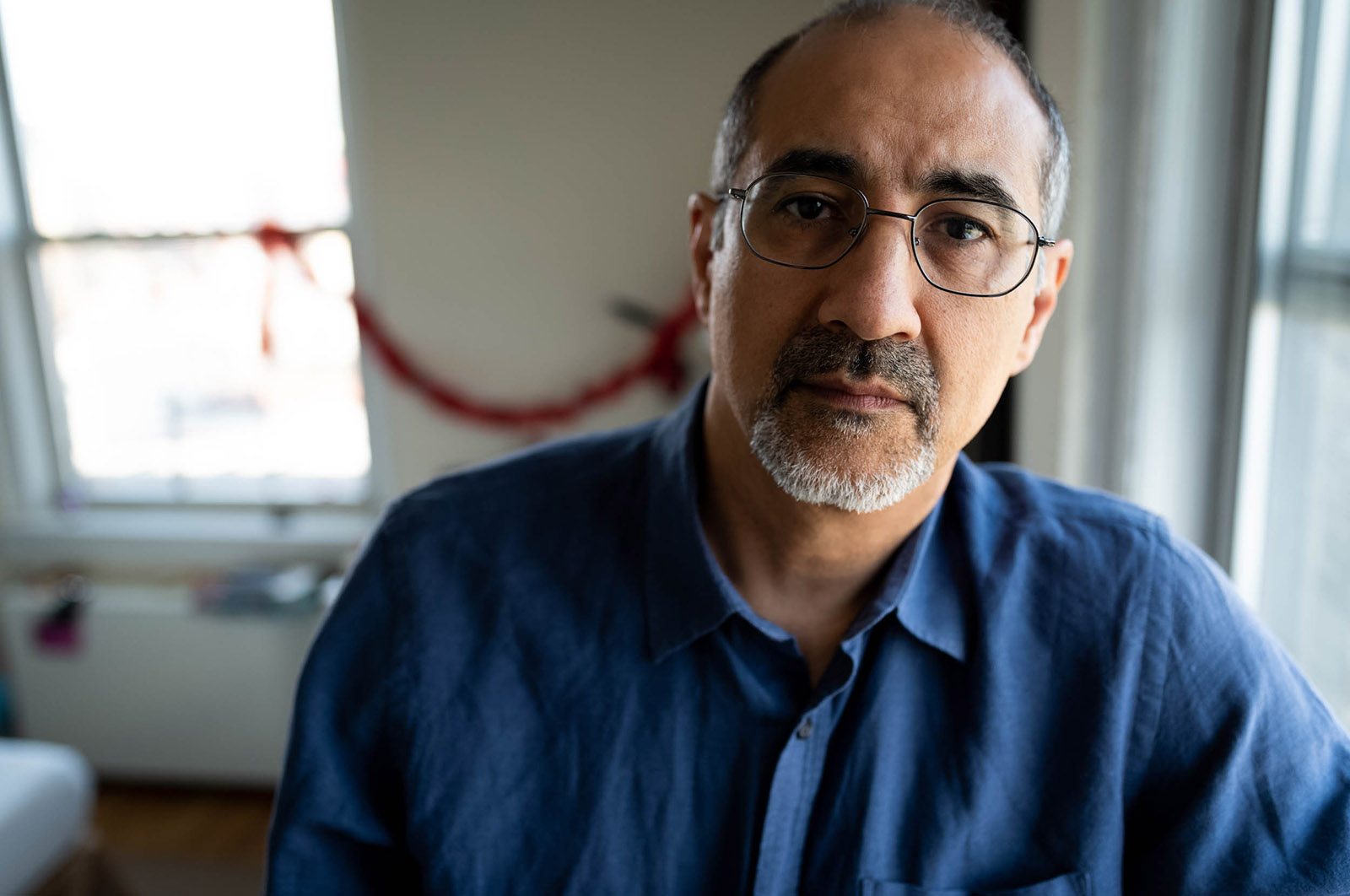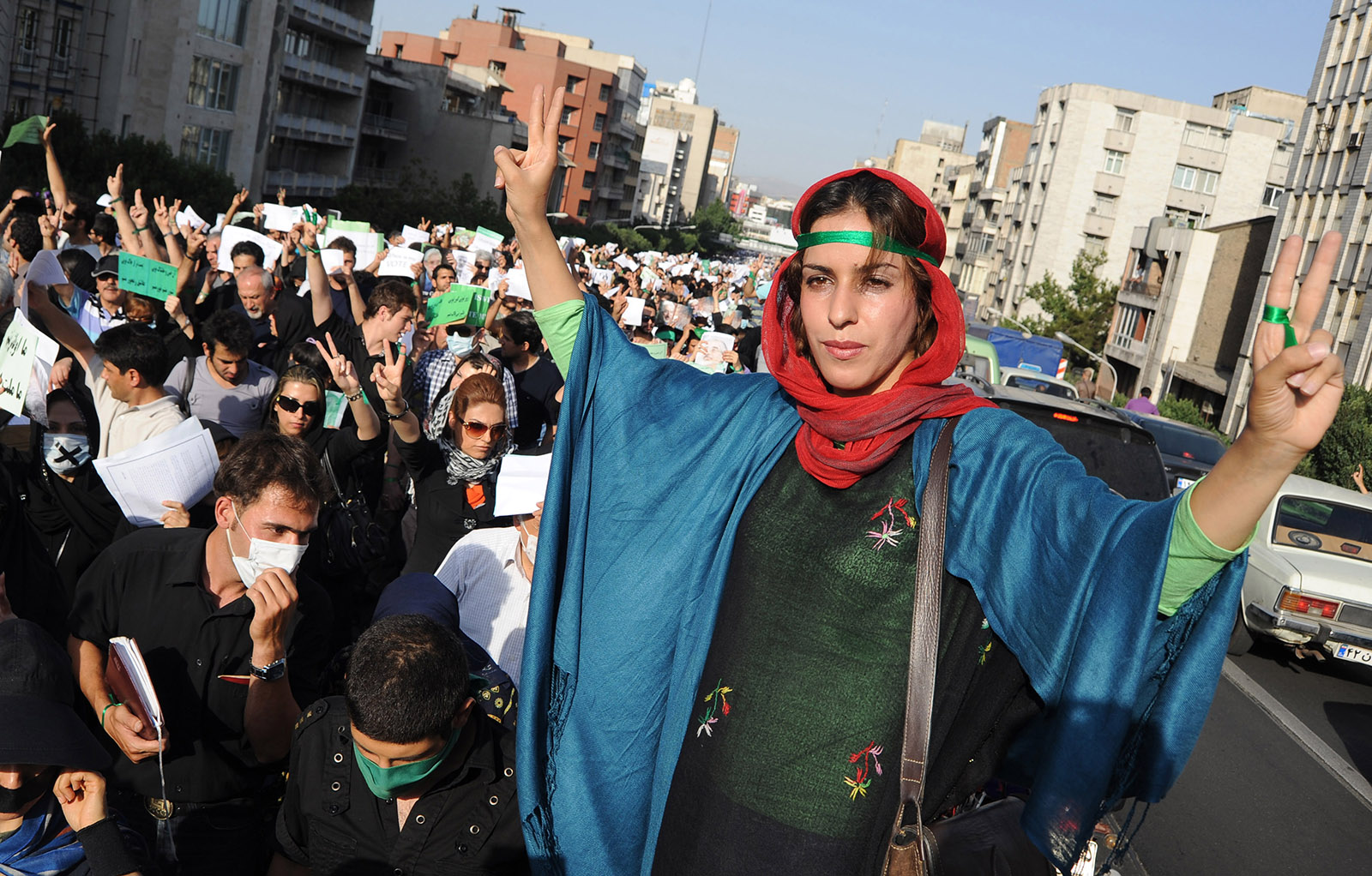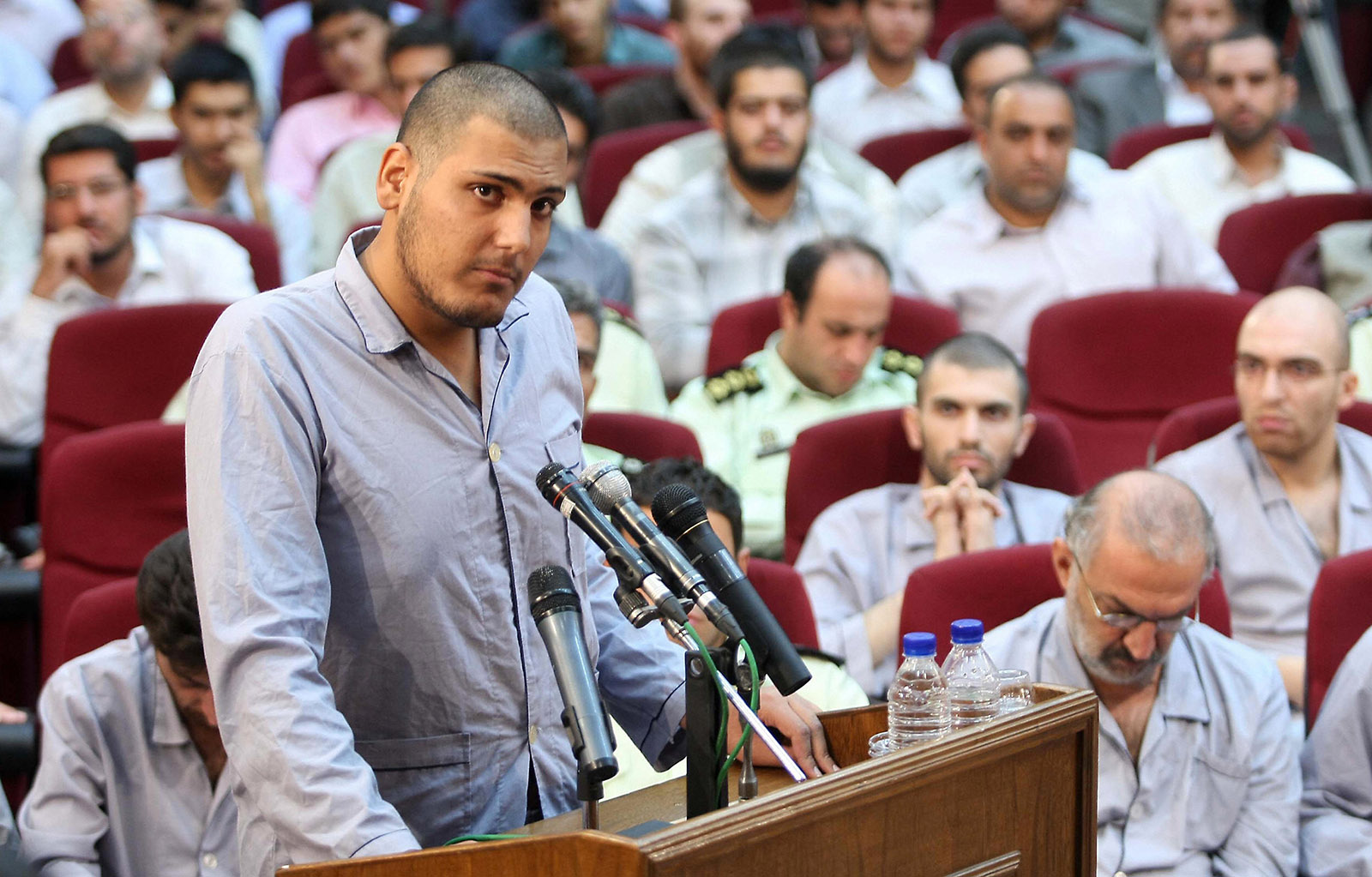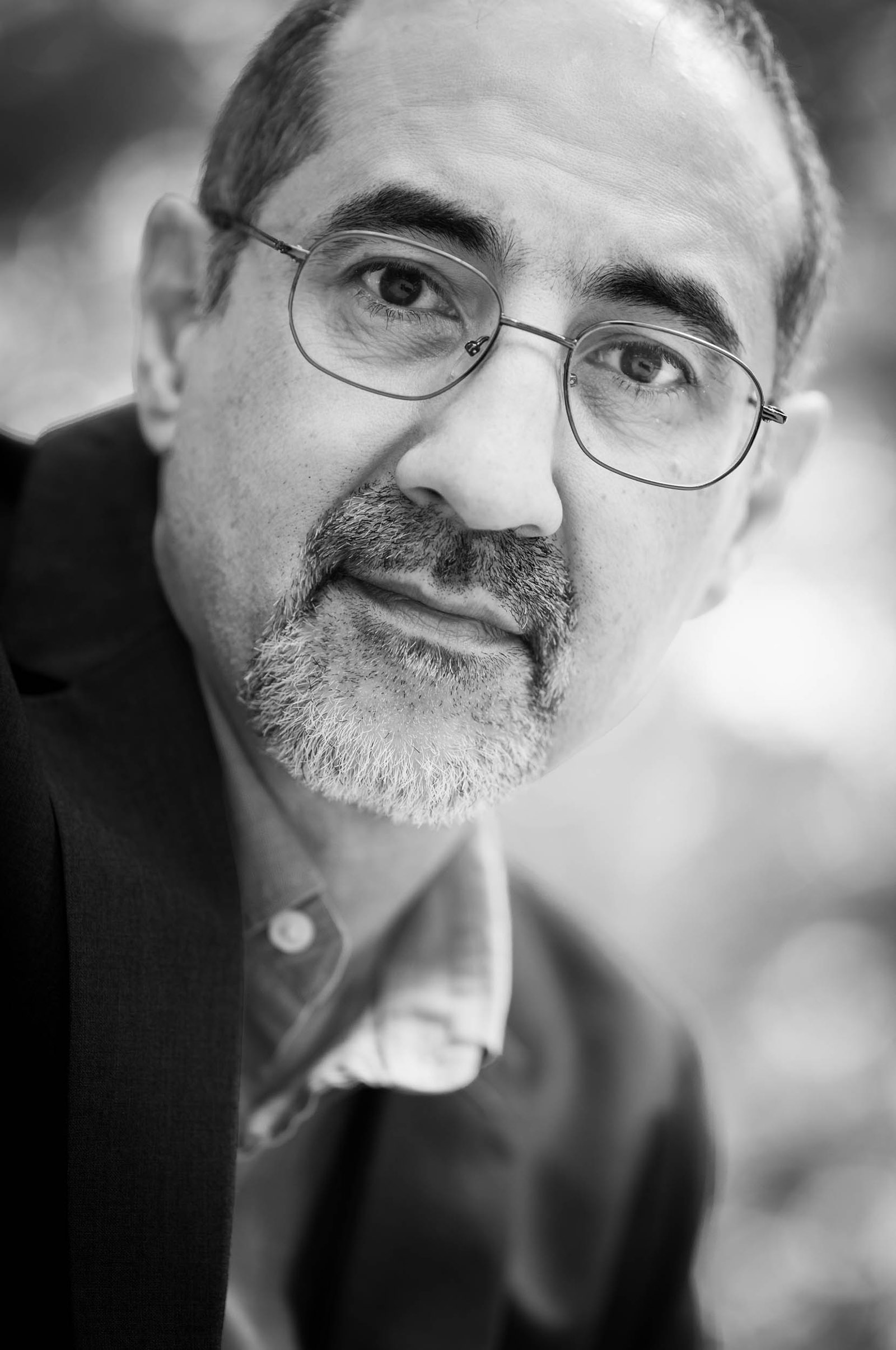More than a decade ago in Evin Prison, one of the darkest corners of the Islamic Republic of Iran, there came a moment when Kian Tajbakhsh had to decide whether to place, in effect, a noose around his neck. He had been given two excruciating days to think about it, as he sat in the tiny concrete room that had been his cage for the past five months.
The guard knocked on the door. Kian’s thinking time was over. As always, he was marched down the corridor in a blindfold that was removed once he sat on the chair with its little wooden table that reminded him of school exams, facing the wall of the interrogation room. The junior guard stood to one side with his incongruous jeans and beardless chin, watching Kian’s reactions, while behind him he heard the familiar low voice of the interrogator, with whom Kian had spent countless hours in conversation, but whose face he had never seen.
All those hours of interrogation. Round and round about every detail of his life and work as a democracy activist, about his ties to George Soros’s organization and Iran’s own reformist movement. In the end, it all boiled down to one simple question: Had Kian been trying to change the character of the Islamic Republic?
Kian was terrified. To answer yes meant admitting to treason, and treason meant the gallows. But he also felt he was seeing things clearly for the first time. “You work for the Open Society Institute,” his interrogator had said. “Well, we don’t believe in an open society. We believe in the Islamic Republic as decreed by Imam Khomeini.”
Kian had spent a decade working with reformist politicians to build a civil society in Iran and try to move the Islamic Republic in a new direction—one in which there were genuinely free elections, an end to censorship, freedom of religion—and only now did he realize how naive they had been. The Islamic Republic was not, as the reformists had claimed, a tug of war between opposing factions, in which the future of the country was up for grabs. There was only the nezam, the system, rigid and immovable. Either you acquiesced or you were a traitor.
In front of Kian lay the standard writing pad of the Ministry of Intelligence, each page bearing the Qur’anic verse “The truth shall set you free.” It sounded awful yet profound. He could not disavow his belief that Iran deserved and needed greater democratic freedom, even as he now understood that this made him an enemy in the eyes of the Islamic Republic.
So, finally, he said yes: his work, if successful, would have fundamentally changed the system. Behind him, the interrogator said nothing. He wrote something on his notepad, stood up, and walked out of the room. Kian was returned to his cell to await his fate. The days that followed were an agony of fear and anticipation. But what came next felt like a miracle: instead of the gallows, he was moved to a communal cell. Then, a few weeks later, he was released.
He was out, but he had been taught a lesson. He had been made to imagine the coarse grip of the rope around his neck, and he had been made to understand that the Islamic Republic was not for changing. Yet his ordeal was far from over.
*
People have been trying to change the Islamic Republic for as long as it has existed. Today, we have the bellicose stupidity of the Trump administration’s Iran policy, which believes it can bully Iran’s leaders into modifying their behavior. Others have tried persuasion and incentives. Others still, like Kian, tried the patient task of building a civil society from within. None of them has succeeded.
I met Kian Tajbakhsh in New York, a few months after my own time in Iran had come to an end. I had spent two-and-a-half years working as a journalist in Tehran—or at least, attempting to do so—and I wanted to meet people who could shed some light on the many things that had been hidden from view while I struggled to operate under the paranoid restrictions of the state.
Kian had left Iran with his parents before the revolution, at the age of eight. He became first a British citizen and later a naturalized American one, building a successful career as a professor of urban politics at the New School in New York. But in his late twenties, his sense of rootlessness became unbearable. He tried a move to India, and married there, but both failed. Then, in the late 1990s, the opening of Iran under a new reformist government seemed to offer a chance to rediscover his true home. It was a heady time. The country’s future suddenly felt wide open—newspapers and publishing flourished. There was a surge of interest in Western liberal philosophy; Jürgen Habermas visited and was treated like a rock star. For his part, Kian found a sense of belonging for the first time—and a place where his abstract theories about building democracy could be tested in the real world.
Advertisement
Amid this tumult, Kian was approached by a representative of Soros named Anthony Richter to join the Open Society Institute. Kian’s job would be to support Iranian human rights lawyers and activists campaigning for principles like freedom of information and women’s empowerment, connecting them with regional and international organizations. Some of Kian’s friends warned him that he would be inviting too much scrutiny. This was precisely the sort of thing that screamed “foreign conspiracy” to the nezam. But Kian believed in the work, and one thing convinced him he would be safe: the project had received the green light from the American-educated Iranian diplomat Mohammad Javad Zarif.
Today, Zarif is the foreign minister of Iran, fluent in English and the smooth argot of the diplomatic world. Back then, in 2004, he was Iran’s representative to the United Nations, making him also Tehran’s unofficial ambassador to the US (since the US and Iran never re-established formal diplomatic relations after the 1979–1981 hostage crisis). Anthony Richter took Kian to meet Zarif several times at his office in New York and laid out their plans to work in Iran.
“They [Richter and Zarif] had obviously known each other for a long time, and Anthony was being completely upfront—in a room which I know now is being recorded and sent directly to the security forces in Iran—saying we would like to do some projects inside Iran,” Kian told me. “And Zarif said, Yes, I will sign off on these projects. We met several times—four or five times over a period of two years.”
In the interrogation room a few years later, Kian learned how naïve he had been to think this meant he was safe. Zarif’s approval meant nothing. Real power lay behind the scenes with the Supreme Leader Ayatollah Khamenei, and his cabal of hardline clerics, Revolutionary Guards officers, and intelligence agents. They saw the principles that Soros represented—the free exchange of ideas, the primacy of individual rights, fully accountable government—as a Western contagion that would ultimately destroy the Islamic Republic from within. They sought to ensure the people’s allegiance, not to liberty, but to God.
Kian paid a heavy price for that naivety. Yet, even after his arrest, and the trauma of the interrogations, he still could not bear to leave and lose his country all over again, to return to the rootless drifting of his exile existence. He stopped his political work, but he stayed in Tehran, hoping he would be left alone. Then, ten years ago this month, the real crackdown came.
*
By 2009, the reformist project had been largely shut down. President Mohammad Khatami’s efforts at democratic reform had been blocked by the unelected Guardian Council, most of the newspapers shut down, and the hardline president, Mahmoud Ahmadinejad, had taken the Islamic Republic back to its default position of baiting the West and enforcing rigid social rules at home.
The reformists’ last hurrah was the Green Movement of 2009, when hundreds of thousands of Iranians took to the streets to peacefully protest Ahmadinejad’s re-election in a vote they believed was rigged. The protests were hugely impressive, but they also played directly into the paranoid worldview of the nezam and gave it the pretext to crush its enemies once and for all. During his interrogations, Kian had been repeatedly asked about Soros’s “plans for the election.” He knew of none, but it made no difference: there was no room in the nezam’s thinking for the idea that Iranians might rebel of their own accord, without direction from abroad.
In July 2009, Kian had been out of prison for more than a year, hoping he could stay, unmolested, in the country. The Green Movement had been building for the past few weeks, but then the security forces were let off the leash. Protesters were dying in the streets and anyone with the slightest connection to the reformists was being rounded up, accused of a vast conspiracy to bring down the state. Kian found himself back in Evin Prison.
He endured another grim few months in solitary before eventually being transferred to better conditions in “The Villa,” where VIP inmates had access to a modest kitchen, a TV for watching football, and best of all, a small courtyard they could use at any time. The fear of the gallows haunted all of them, but there were moments of respite and even pleasure. One day, one of the men’s wives brought in a badminton net and they held a tournament: Kian took the nickname “Soros United,” facing off against his friend Mostafa Tajzadeh, a former elections official in the Khatami government, who competed under the banner of “Sedition City.”
Advertisement
The Villa group included former vice-presidents and speakers of parliament. Like most reformist leaders, they had once been leading cadres of the Islamic revolution but shifted to a more liberal outlook in the 1990s. They remained deeply pious men who prayed three times a day (the norm for Shiites) and regularly read the Qur’an. Kian was the odd one out, having grown up in godless Britain, but he began praying along with his cellmates and pressed them into discussions about Islam.
“My secular liberal upbringing had given me almost no coordinates for making sense of what a theocratic state is,” he told me when we met in New York, years later. “Now that I was under the boot of one, it didn’t feel appropriate to just respond by saying these are crazy barbarians from the medieval period. It wouldn’t help me.”
He opened his mind even to the worldview of his captors. “My fellow prisoners were very impressive to me, but I have to say: so were some of the interrogators,” Kian told me. “They had lived lives that were so far outside of my experience—a revolution, an eight-year war with Iraq. They had insights and views that I was not qualified to judge. I felt I had to listen and learn.”
This is the most difficult thing about Iran to grasp from outside and probably the most controversial. The Islamic Republic’s worldview seems so dark and oppressive to outsiders. But its attitude of stubborn defiance toward the West draws on the deep-rooted imagery of Shiite martyrdom and the national pride of a storied civilization. This blend of religious feeling and patriotism strikes a chord even with many of the Iranians who today disavow the revolution for the chaos it has wrought.
But Kian’s willingness to empathize and learn could help him only so much against the maddeningly arbitrary course that Islamic justice can take in Iran. “We all know how hard this is for you,” Mostafa told him one day as they ran mini-laps of the courtyard. “You must think this is crazy, but we grew up here, so if they walk in today and say you’re all free to go, we won’t be surprised. And if they don’t come for ten years, we won’t be surprised either.”
In August 2010, on the eve of their mass trial, which featured more than a hundred defendants—a spectacle designed to end the Green Movement once and for all—Kian sat up with Mostafa until two or three in the morning. Mostafa was tough: he had grown up in a rougher part of Tehran than the others, and he was not going down without a fight. He had read about Gandhi’s appearance before a British judge in 1922 on charges of inciting unrest, in which Gandhi refused to request the mercy of the court, and instead told the colonial judge that he had only two options: inflict on him the severest penalty possible or resign his position immediately because he recognized that the law was unjust.
“I am going to boycott the proceedings tomorrow,” Mostafa told Kian. “I’ve spoken to my lawyer. He estimates I’ll get thirteen years. I’ve been thinking about it for the last two or three days and I think, yes, I can do it.”
Kian was stunned by his friend’s fortitude. But he thought the reformists were wrong. They could not let go of their long-held hopes for the Islamic Republic. They still felt it could be made compatible with a Western conception of human rights and democracy. The reformists imagined a system with free elections and unfettered civil society, yet with religion still entirely intertwined with politics. Their desire for reform was driven by some mixture of guilt and a wish for redemption: they had been among the most radical in the early days of the revolution—“worse than the Taliban,” as one put it—and they needed to believe that all that effort had been worthwhile.
“The reformists would say—and still say—that they are pushing for the democratic interpretation of Islam that Khomeini really wanted for Iran,” Kian said. During his months in solitary, though, when his thin thread to sanity was the few books he could borrow from the Evin library, Kian had requested the entire collected speeches and writings of the Ayatollah.
“I read all twenty-seven volumes from cover to cover,” Kian told me. “It was a real eye-opener. I came out thinking the reformists are wrong. From 1960 all the way to the end, Khomeini was very consistent: he has nothing good to say about democracy, nothing good to say about liberalism.”
Kian would later grow impatient with other foreign-raised prisoners who wrote memoirs bemoaning their fates, claiming they had never sought to overthrow the Islamic Republic but in the same breath claiming all they wanted was a more secular, liberal Iran—as if the two were compatible. Kian wanted to own his punishment—to see himself as part of a struggle, alongside millions of other Iranians, that may have been fruitless but had been worth fighting for. His interrogators had been coaching him for his appearance at the trial, but when he took the stand, Kian diverted from the script in a small but crucial way. He told the judge his real crime had not been treason, but the naivety to believe that the Islamic Republic could ever be compatible with Western-style democracy.
*
Today, the reformists are a spent force. Some of their leaders are still in detention, almost all are barred from politics. Practically all trace of the former reformist President Khatami has been erased from public view, his face and words banned from the media. Lacking any other option, reformists were obliged to support the “moderate” Hassan Rouhani in the presidential elections of 2013 and 2017. Rouhani borrowed their rhetoric of civil rights and vowed to release their detained leaders, but he has little power and has changed nothing. True power resides with the supreme leader and the Revolutionary Guards Corps that answer only to him.
Having marginalized the reformists, the nezam has systematically picked off every other form of organization that tries to exist independently of its rigid orthodoxy: writers, environmentalists, labor organizers, even Zumba teachers. There is still some space for political debate, but the nezam sets the terms. When any real protest occasionally breaks out, it is ruthlessly put down. The idea that George Soros ever had “a man in Tehran” now seems utterly bizarre.
If there is any hope for change, it lies in the fact that much of Iranian society has stopped trying to force political reform on the nezam, and instead tries to live as if it doesn’t exist. The authorities hit back at signs of cultural rebellion—arresting girls whose hair is visible, or kids who like to dance—but it can’t arrest everyone. As the numbers of those ignoring the nezam grow, the tide of social change is becoming irresistible. It remains to be seen how the system will adapt.
It is not clear how this will be affected by the Trump administration’s “maximum pressure” campaign. Some argue it will rally Iranians to the flag, others that it will force a desperate nation into a fresh revolution. The truth is that no one knows. The dominant mood I sensed when I lived in Tehran—among those who wanted change—was one of dismal resignation. They had put their faith in gradual reform and it had failed. They had put their faith in the nuclear deal and its promise of economic rejuvenation and that, too, had failed. And they knew the nezam had spent years honing its ability to crush the slightest hint of dissent and unrest.
“There is this idea that the Revolutionary Guards Corps are not fighters anymore, that they have become criminal mafiosi, fat and happy, and only interested in material goods. I’m not convinced,” Kian told me. “There is increasing radicalization in the seminaries and the security apparatus. The war in Syria has shown that they are willing to fight and die. They will never abandon their fundamental belief that the policies of the West are unjust and illegitimate.”
*
By the time of the mass trial, Kian had finally accepted that there was no place for him in the Islamic Republic of Iran, however much his Iranian roots made him desperate to stay. But it took him several more years to finally escape. He was sentenced to fifteen years in prison, later commuted to five years of house arrest. Then, in 2015, he became a pawn in the negotiations with Washington that led to the nuclear deal. Kian’s case was kept secret because, if things went sour, he didn’t want to be thrown back in prison along with the regime’s other hostages, including the Washington Post journalist Jason Rezaian. He was told, to his deep consternation, that if the talks failed, he might never leave.
As it was, behind-the-scenes negotiations on the prisoner swap went down to the wire, with the Iranians almost reneging on a deal at the very last moment when they realized that none of the Iranians being released from US jails actually wanted to return home. Out of the blue, Kian got a call on January 15, 2016, from the head of the American interests section at the Swiss Embassy. The official told him he had ten minutes to decide whether he wanted to leave that night on a Swiss military plane. It could be his only chance to get out. But there was a catch: he couldn’t take his wife and child with him.
Kian did not want to flee suddenly in the night. He was not just a hostage being held as a bargaining chip: he had accepted responsibility for his actions and accepted the verdict of the court; and he had done his time, even if he felt tremendous guilt for putting his family through years of torment. His wife, Bahar, summed up their plight: “Even if all of us were able to leave tonight, it would not be right—you would be going as a fugitive.” So Kian called back the Swiss Embassy, took a deep breath, and told them they would wait to leave as free citizens.
As he recounted the tale to me—more than three years later, in a café in New York’s Upper West Side, where Kian today is a professor of architecture, planning, and preservation at Columbia—I could see even now how his breath quickened and back straightened as he relived the tension of making that decision. It was a gamble—but in the end, it went their way. The next morning, the Ministry of Foreign Affairs called to say that Kian’s passport was ready; the family could leave when they wished.
Before the Tajbakhshes left, he had one final meeting with his Revolutionary Guards handler, with whom he had had to check in every week for the past six years. “Will I ever see Iran again?” Kian asked. After all this, letting go of his homeland was still painful.
“Why don’t you enjoy the West for a while,” the officer said.





